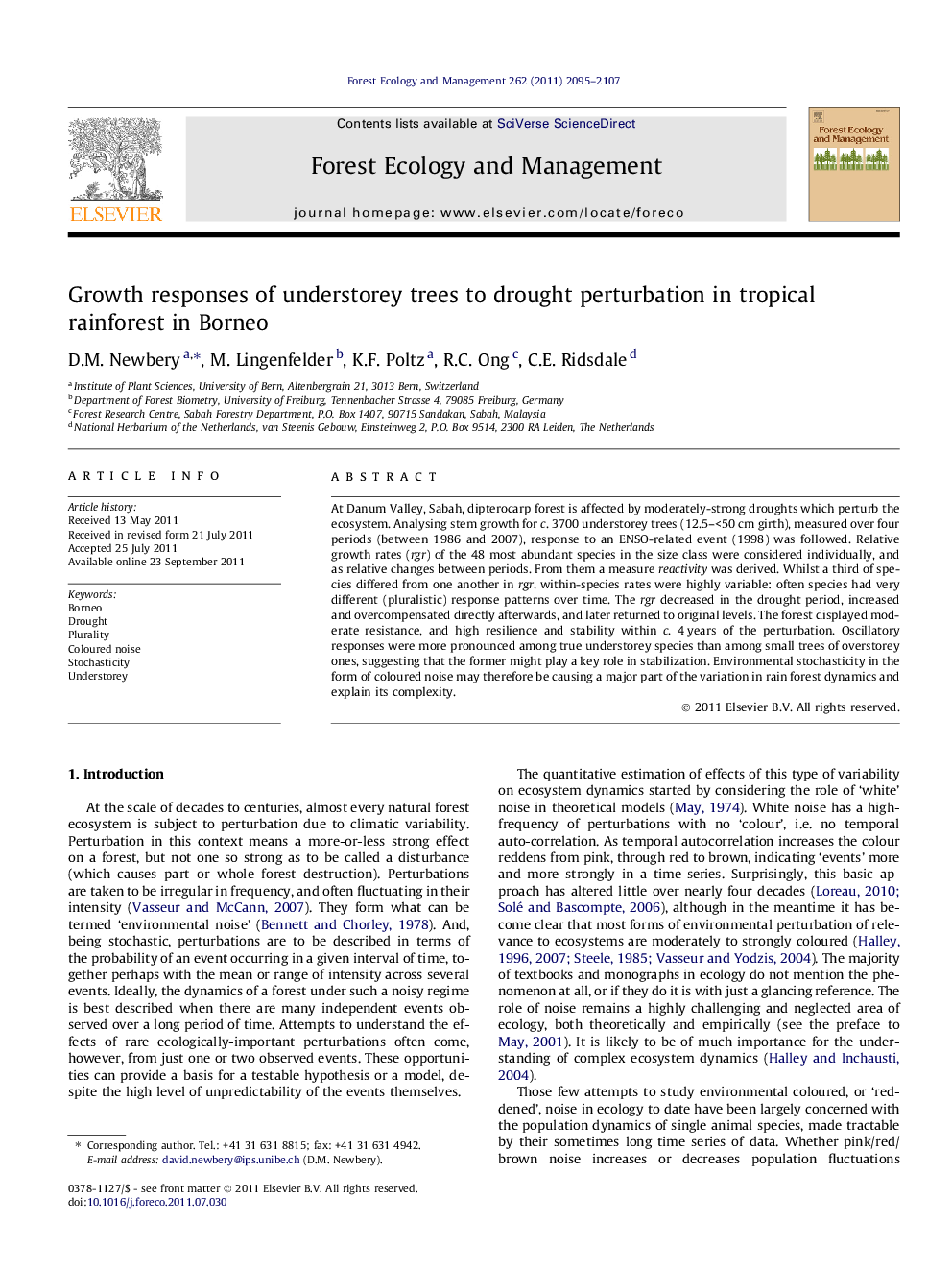| Article ID | Journal | Published Year | Pages | File Type |
|---|---|---|---|---|
| 87797 | Forest Ecology and Management | 2011 | 13 Pages |
At Danum Valley, Sabah, dipterocarp forest is affected by moderately-strong droughts which perturb the ecosystem. Analysing stem growth for c. 3700 understorey trees (12.5–<50 cm girth), measured over four periods (between 1986 and 2007), response to an ENSO-related event (1998) was followed. Relative growth rates (rgr) of the 48 most abundant species in the size class were considered individually, and as relative changes between periods. From them a measure reactivity was derived. Whilst a third of species differed from one another in rgr, within-species rates were highly variable: often species had very different (pluralistic) response patterns over time. The rgr decreased in the drought period, increased and overcompensated directly afterwards, and later returned to original levels. The forest displayed moderate resistance, and high resilience and stability within c. 4 years of the perturbation. Oscillatory responses were more pronounced among true understorey species than among small trees of overstorey ones, suggesting that the former might play a key role in stabilization. Environmental stochasticity in the form of coloured noise may therefore be causing a major part of the variation in rain forest dynamics and explain its complexity.
► We studied the response of understorey trees in a rain forest to an ENSO perturbation over 21 years. ► Stem growth rates decreased then compensated during and after drought showing ecosystem stability. ► Understorey species per se were much more reactive than small stems of overstorey ones. ► The reddened nature of the climate stochasticity appears to drive the ecosystem dynamics. ► The plurality of species’ responses in the understorey is essential to forest recovery.
